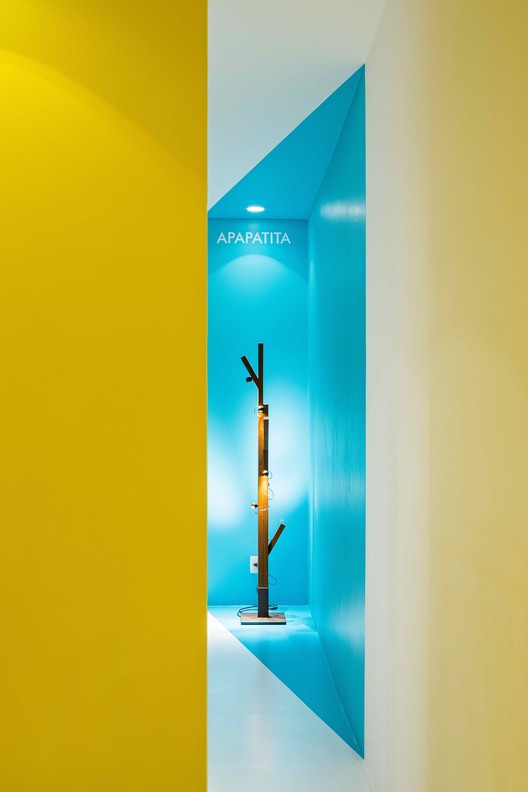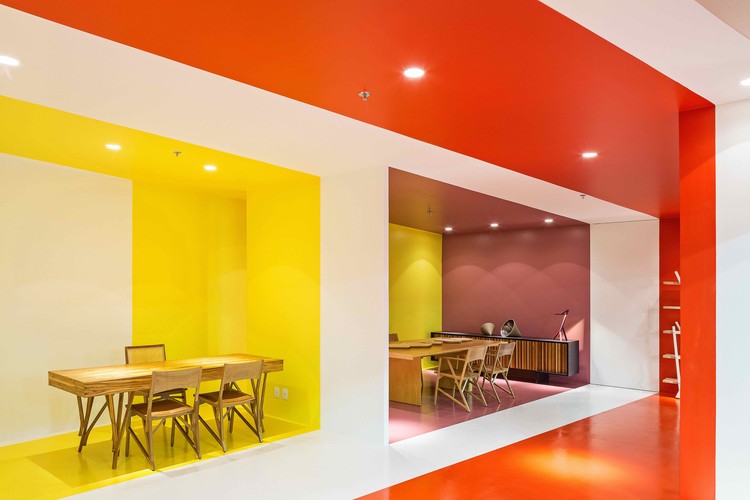
-
Architects: BLOCO Arquitetos
- Area: 180 m²
- Year: 2017
-
Photographs:Haruo Mikami
-
Manufacturers: Microreve, Paulo Alves, Suvinil
Text description provided by the architects. The COR shop is located in the underground parking of a shopping mall in Brasília, Brazil.

The client´s briefing for the shop “COR” (color in portuguese) asked us to create a space that could work both as a showroom for a brazilian brand of paintings and architectural coatings and as the backdrop for the display of the work of the furniture designer Paulo Alves, from São Paulo. At the same time the space should be flexible enough to host parties and events. How to connect such different uses in a small space?

We looked at the work of Paulo Alves as a starting point. We saw his love for the concrete art as an element that could connect all the proposed uses: color. According to Theo Van Doesburg in his Concrete Art manifesto from 1930, “Concretism is not abstract because nothing is more concrete and real than the line, the color and the surface”. In this case we were interested in transforming the abstract notion of color into something palpable in space. Therefore we looked at the work of artists such as Felix varini and George Rousse and their aim of creating certain forms that only exist when observed from a specific point of view.



We created a series of white walls that serve mainly as a backround for the furniture. These walls were positioned in space according to a single point of perspective at the main entrance of the shop. Therefore, from that specific point of view, the showroom looks like a sequence of white walls, floosr and ceiling. This specific point of observation is marked by a white circle on the floor inside the black room that precedes the entrance. However, small “pockets” of colorful walls, floors and ceilings are revealed as one enters the shop. This was achieved following the lines of perspective from the defined point of view to define the limits of the color surfaces. The internal colors are only revealed through the movement of the visitor.



A secondary display window faces small group of parking spaces. Only from this point of view it is possible to see the whole internal space at once.




























